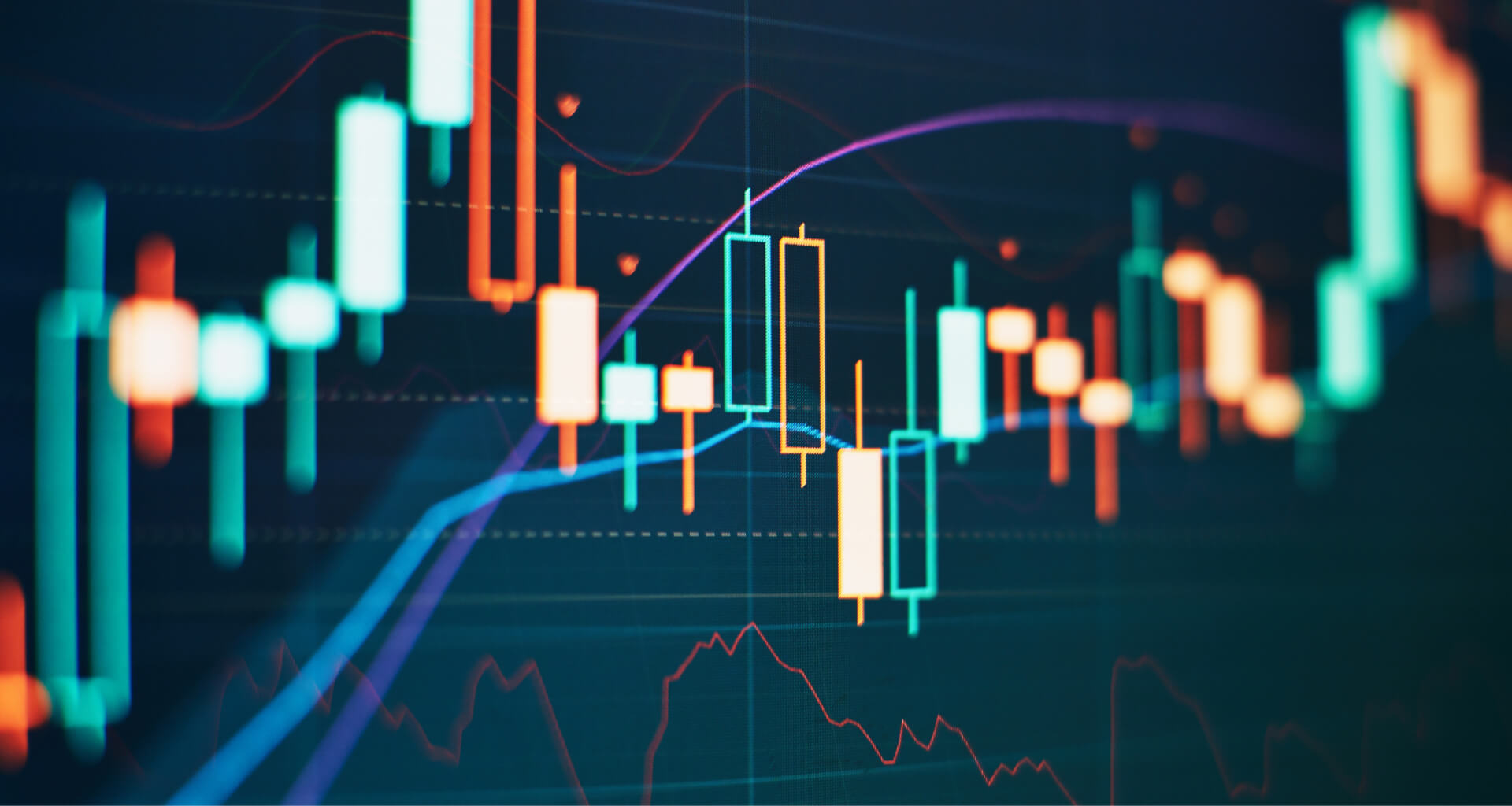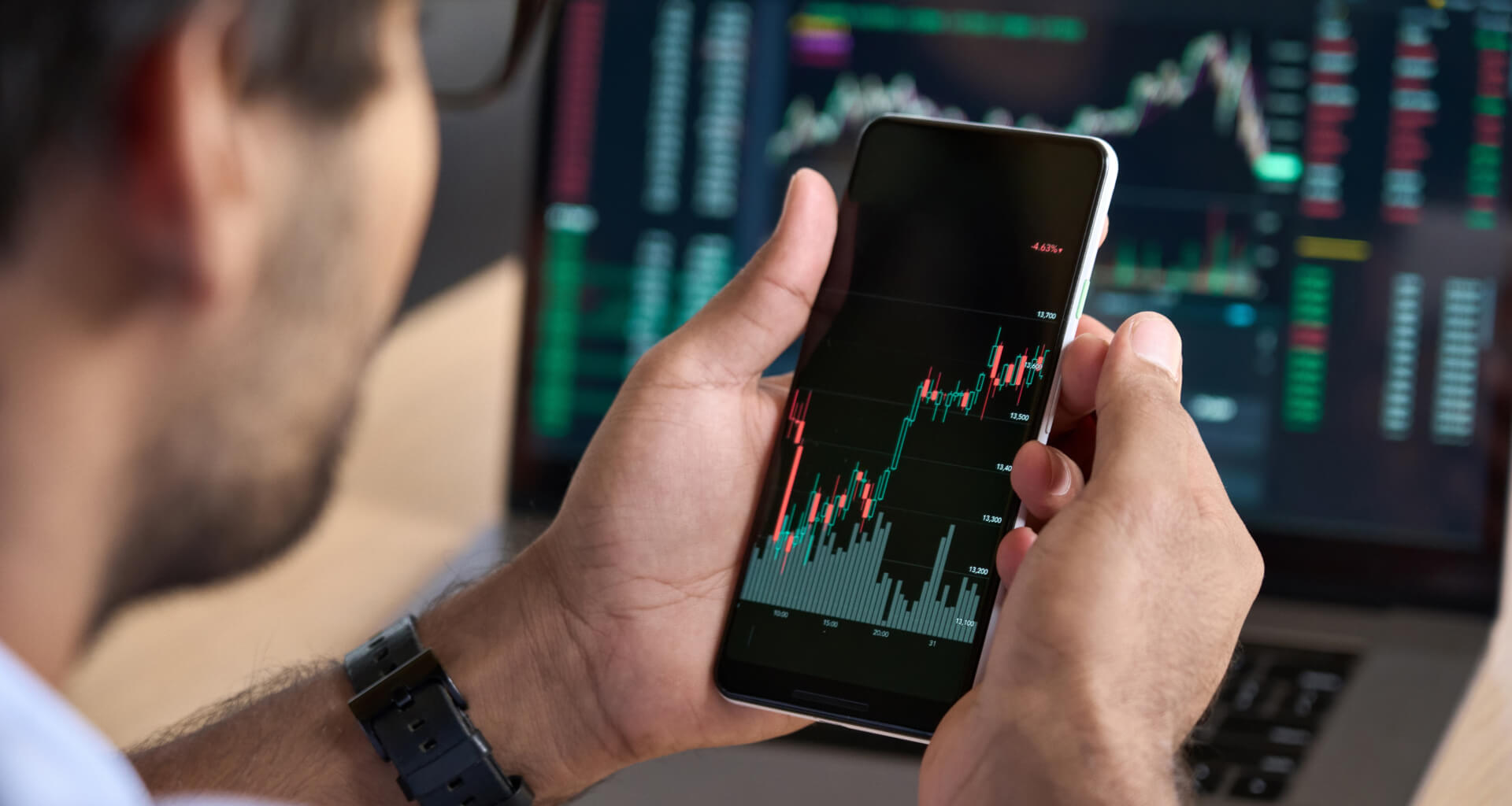Short-term trading implies that profits should be made fast, and positions closed after a short holding period, from mere seconds to a day, or a week maximum. That’s why, for day traders, it’s essential to know the best timeframes for trading, including the best time, day, and month to buy and sell stocks to reap the highest earnings. In this article, we will discuss key facts about the best time to invest in stocks and extrapolate them to various areas of the globe with different time zones to eliminate any confusion.
Are There Even the Best Times to Trade Stocks or Are They a Myth?
Beginning traders often enter the exciting world of stock trading with a belief that there are some golden hours or days when profits are bound to be particularly high. This belief may seem unreasonable, since there are many factors that impact the prices, yet some patterns of correlation between time and profits do exist. They were confirmed by many years of observations on the part of experienced traders and market analysts, and they can be explained by historical or psychological factors.
The widest generalization that can be made at first is that the opening and the closing hours of a trading day are the most optimal time frames for making money (with certain caveats). Another important fact is that summer months witness a kind of a lull in trading, in contrast to busier fall and winter months.
We will explore these and other facts and timing tips about when to trade stocks further on, with relation to different time zones for traders around the world. So keep on reading and matching the clues we provide to your particular location and time.
Remember that the past good or bad performance of the stocks never guarantees their similar performance in the future.
The Key Stock Market Hours to Keep an Eye For in Different Regions of the World
To begin with, global trading follows the patterns set by the biggest trading venues, of which the New York Stock Exchange is the leading one if we talk about stocks. NASDAQ goes close to it, and they share the same trading hours.
These two venues perform trading from 2:30 p.m. GMT+0 to 9:00 p.m. GMT+0 on weekdays (or from 9:30 a.m. to 4:00 p.m. EST, the New York time zone), and they do not operate on weekends. Traditionally, the most active stock trade on the global scale happens during the working hours of these two systems.
There are pre-market and after-hours trading time slots, but they are suitable for professional traders with plenty of experience. After-hours trading continues from 9:00 p.m. GMT+0 to 1:00 a.m. GMT+0 (weekdays only). We currently do not provide access to this extra-hour trade because of risks and limitations. Although these time slots offer more opportunities, they are also connected to a higher degree of risk and put many undue burdens and conditions on a trader. So for a beginning trader, we recommend trading during traditional hours (2:30 p.m. GMT+0 to 9:00 p.m. GMT+0) until one gets sufficient experience and “the feel” of the markets.
It’s necessary to remember that due to differences in time zones, the regular trader times in various countries across the globe may not coincide with the working hours of the NYSE as we mentioned them. Also, mind if your country has the Daylight Saving Time program (and the USA does have it). For you not to get confused, we offer a brief comparison table.
| Country | Stock exchanges working hours (GMT+0 time zone) | Stock exchanges working hours (Local time, GMT format) |
|---|---|---|
| India | 2:30 p.m. to 9:00 p.m. | 8:00 p.m. to 2:30 a.m. of the next day (GMT+05:30) |
| Malaysia | 2:30 p.m. to 9:00 p.m. | 10:30 p.m. to 5:00 a.m. of the next day (GMT+08:00) |
| South Africa | 2:30 p.m. to 9:00 p.m. | 4:30 p.m. to 11:00 p.m. of the same day (GMT+02:00) |
| Central Africa | 2:30 p.m. to 9:00 p.m. | 4:30 p.m. to 11:00 p.m. of the same day (GMT+02:00) |
| Nigeria | 2:30 p.m. to 9:00 p.m. | 3:30 p.m. to 10:00 p.m. (GMT+01:00) |
| Indonesia time zones | 2:30 p.m. to 9:00 p.m. | 9:30 p.m. to 4:00 a.m. of the next day (GMT+07:00, Jakarta time) |
| 10:30 p.m. to 6:00 a.m. of the next day (GMT+08:00, Bali time) | ||
| 11:30 p.m. to 5:00 a.m. of the next day (GMT+09:00, Jayapura time) | ||
| Argentina | 2:30 p.m. to 9:00 p.m. | 11:30 a.m. to 6:00 p.m. (GMT-03:00, Buenos Aires time) |
| Puerto Rico | 2:30 p.m. to 9:00 p.m. | 10:30 a.m. to 5:00 p.m. (GMT-04:00, Bayamon time) |
| Ecuador | 2:30 p.m. to 9:00 p.m. | 9:30 a.m. to 4:00 p.m. (GMT-05:00, Quito time) |
A Roundup of the Best Times of Day for Trading Stocks as Listed by Regions
Now that you know when the stock market operates, let’s look at the best time slots for trading. Beginning and closing hours of daily trading are the best moments to make profits for both experienced and inexperienced traders.
The slot of 2:30 p.m. to 3:30 p.m. GMT+0 offers high volatility due to the influx of the news of the previous evening and night, so if you aim high, it’s the best time to trade. However, mind that the first 15 minutes are totally crazy, price moves are almost unpredictable, so only the most experienced traders with tested strategies risk making transactions during this short time frame. The remaining 45 minutes are welcoming to all traders.
The middle of the trading day is calm compared to its beginning, and big experienced traders stop opening positions by around 4:30 p.m. GMT+0. You may put your trades on hold as well, or, if you are just getting your feet wet in trading, you can try making transactions during this lull. The price changes will take more time, so you’ll have time to react if anything goes wrong. It is the best time of day to buy stocks for beginners who need to hone their skills.
In the closing hour, from 8:00 p.m. to 9:00 p.m. GMT+0, the trade becomes agitated again, with volumes and volatility booming. Unpredictable spikes or falls happen during this period, so watch your positions closely. If you want to make profits, it’s probably the best time of day to trade stocks.
In different parts of the world, the opening and closing hours of the market will fall on various parts of the day or night (sometimes rolling over into the next day).
| Country | Opening and closing hours (GMT+0 time zone) | Opening and closing hours (Local time, GMT format) |
|---|---|---|
| India | 2:30 p.m. to 3:30 p.m. | 8:00 p.m. to 9:00 p.m. |
| 8:00 p.m. to 9:00 p.m. | 1:30 a.m. to 2:30 a.m. of the next day (GMT+05:30) | |
| Malaysia | 2:30 p.m. to 3:30 p.m. | 10:30 p.m. to 11:30 p.m. |
| 8:00 p.m. to 9:00 p.m. | 4:00 a.m. to 5:00 a.m. of the next day (GMT+08:00) | |
| South Africa | 2:30 p.m. to 3:30 p.m. | 4:30 p.m. to 6:00 p.m. |
| 8:00 p.m. to 9:00 p.m. | 10:00 p.m. to 11:00 p.m. of the same day (GMT+02:00) | |
| Central Africa | 2:30 p.m. to 3:30 p.m. | 4:30 p.m. to 5:30 p.m. |
| 8:00 p.m. to 9:00 p.m. | 10:00 p.m. to 11:00 p.m. of the same day (GMT+02:00) | |
| Nigeria | 2:30 p.m. to 3:30 p.m. | 3:30 p.m. to 4:30 p.m. |
| 8:00 p.m. to 9:00 p.m. | 9:00 p.m. to 10:00 p.m. of the same day (GMT+01:00) | |
| Indonesia time zones | 2:30 p.m. to 3:30 p.m. | 9:30 p.m. to 10:30 p.m. |
| 8:00 p.m. to 9:00 p.m. | 3:00 a.m. to 4:00 a.m. of the next day (GMT+07:00, Jakarta time) | |
| 2:30 p.m. to 3:30 p.m. | 10:30 p.m. to 11:30 p.m. | |
| 8:00 p.m. to 9:00 p.m. | 5:00 a.m. to 6:00 a.m. of the next day (GMT+08:00, Bali time) | |
| 2:30 p.m. to 3:30 p.m. | 11:30 p.m. to 12:30 a.m. of the next day | |
| 8:00 p.m. to 9:00 p.m. | 4:00 a.m. to 5:00 a.m. of the next day (GMT+09:00, Jayapura time) | |
| Argentina | 2:30 p.m. to 3:30 p.m. | 11:30 a.m. to 12.30 p.m. |
| 8:00 p.m. to 9:00 p.m. | 5:00 p.m. to 6:00 p.m. of the same day (GMT-03:00, Buenos Aires time) | |
| Puerto Rico | 2:30 p.m. to 3:30 p.m. | 10:30 a.m. to 11:30 a.m. |
| 8:00 p.m. to 9:00 p.m. | 4:00 p.m. to 5:00 p.m. of the same day (GMT-04:00, Bayamon time) | |
| Ecuador | 2:30 p.m. to 3:30 p.m. | 9:30 a.m. to 10.30 a.m. |
| 8:00 p.m. to 9:00 p.m. | 3:00 p.m. to 4:00 p.m. of the same day (GMT-05:00, Quito time) |
The beginning and closing hours of the daily trading are the best moments to make profits for both experienced and inexperienced traders.
When the Best Day is Not the Weekend: Best Week Days to Trade Stocks
Similar to the previous trend with the time of the day, the best days for trading fall at the beginning and the end of the workweek.
On Monday, it is recommended to buy stocks, because prices tend to fall due to a few psychological factors. The influx of potentially negative news, return to the workplace and other connected factors make trading moods – and prices – drop. So it’s a good time to get a bargain. Some experts say that this “Monday effect” has waned and the prices are similar to those of other weekdays. However, practicing traders still recommend buying stocks on Mondays, after the initial craze of the morning trade has settled and any potential damage to prices was accounted for.
Commonly, Friday is considered to be the best day to sell stock (unless some other factors need to be accounted for). Before weekends, the moods are high and this optimism drives the prices higher even without any significant underlying reason. The year-long observation of price moves (with adjustment for other reasons impacting the prices) indicates that indeed, on average, the price boost is the highest on Fridays. So before you depart for the weekend, sell stocks and buy them back on Monday. This move will allow you to weather safely any possible blow to prices delivered by the negative events that may happen during the weekend when the markets are closed and you cannot control the situation.
Please remember that day and time in your country and the operating schedule of the NYSE can differ drastically. So, say, while it’s still Sunday in New York, technically, it’s Monday in your country. Be sure to keep the correct time tracking while you trade.
| Country | Day and time (GMT+0 time zone) | Day and time (Local time, GMT format) |
|---|---|---|
| India | 2:30 p.m. to 9:00 p.m., same day | 8:00 p.m. to 2:30 a.m. of the next day (GMT+05.30) |
| Malaysia | 2:30 p.m. to 9:00 p.m., same day | 10:30 p.m. to 5:00 a.m. of the next day (GMT+08:00) |
| South Africa | 2:30 p.m. to 9:00 p.m., same day | 4:30 p.m. to 11:00 p.m. of the same day (GMT+02:00) |
| Central Africa | 2:30 p.m. to 9:00 p.m., same day | 4:30 p.m. to 11:00 p.m. of the same day (GMT+02:00) |
| Nigeria | 2:30 p.m. to 9:00 p.m., same day | 3:30 p.m. to 10:00 p.m., same day (GMT+01:00) |
| Indonesia time zones | 2:30 p.m. to 9:00 p.m., same day | 9:30 p.m. to 4:00 a.m. of the next day (GMT+07:00, Jakarta time) |
| 10:30 p.m. to 6:00 a.m. of the next day (GMT+08:00, Bali time) | ||
| 11:30 p.m. to 5:00 a.m. of the next day (GMT+09:00, Jayapura time) | ||
| Argentina | 2:30 p.m. to 9:00 p.m., same day | 11:30 a.m. to 6:00 p.m., same day (GMT -03:00, Buenos Aires time) |
| Puerto Rico | 2:30 p.m. to 9:00 p.m., same day | 10:30 a.m. to 5:00 p.m., same day (GMT -04:00, Bayamon time) |
| Ecuador | 2:30 p.m. to 9:00 p.m., same day | 9:30 a.m. to 4:00 p.m., same day (GMT -05:00, Quito time) |
When to Buy Stock: Picking the Best Day of the Month
Although it may seem a farfetched assumption, there are some days of the month (with some exceptions) when buying stocks is more rewarding. These days fall in the middle of the month (if you need to pinpoint exactly the best day of the month to buy stocks, then, approximately, the days from the 11th to 15th). Prices usually tend to drop slightly, so you can save money by investing during this time slot.
The possible explanation of this phenomenon is that after the initial optimism of the beginning of the month, the moods dive down, promising stocks prove to be not as well-performing as expected, and traders start dumping the positions of their portfolios to make room and funds for future trades.
When to Sell Stock: Determining the Best Day of the Month
The turn of the month, the 5 days that span the end of one month and the beginning of the next one, is the best time to sell, usually. It happens because this time slot sees the additional streams of money pour into mutual funds, thus driving the prices upward. The price increase also relates to the desire of fund managers to beautify the portfolios they manage for the quarterly reports through the purchase of stocks that performed well during the past quarter.
Hopefully, you remember that past good or bad performance of the stocks never guarantees their similar performance in the future, that’s why we recommended doing the opposite and selling stocks when one month ends and another one begins.
Come Summer or Winter: the Best Month to Buy Stocks
The historical adage goes that summer is typically low for trading and the boom begins when the fall starts (the fall according to the Northern Hemisphere calendar). It was connected to the fact that people who could afford to trade in stocks left London or New York to spend summer in their country estates and sold their stocks for that period. Then, they returned in colder months to continue their business affairs and purchased stocks anew, thus driving demand and prices upward. This pattern of temporary migration does not hold up anymore, so seasonal schedules will not tell us when is a good time to buy stocks (or sell).
Nowadays, however, other rules for monthly trade scheduling apply. Investors with big portfolios usually start selling the stocks that lose their initial value in December to claim for capital losses on their tax return filings. Grown supply drives prices further downward, and it’s a good time to add new stocks to your portfolio at a discount.
Another reason that may push you to buy is the January effect, which means that prices of stocks go up during this month because of psychological reasons (new hopes and expectations, refreshed desire to trade, etc.). It is particularly true for small-cap and value stocks. So if you buy in December, you will definitely see them increase in value in January, so you can reap the early benefits. The January effect is less noticeable today, but the grand unloading of stocks by big investors in December still holds true.
In the Fall, the Stocks Fall: the Best Month to Sell Stocks
Again, for historical reasons, September and October are the months with the lowest returns on investment and with the gloomiest fame. Both months have witnessed some deeply negative market events that reverberated across the globe.
So if you seek advice on when is a good time to sell stock before replenishing your portfolio with new positions, sell them in September or October, picking them back up in late November or December.




